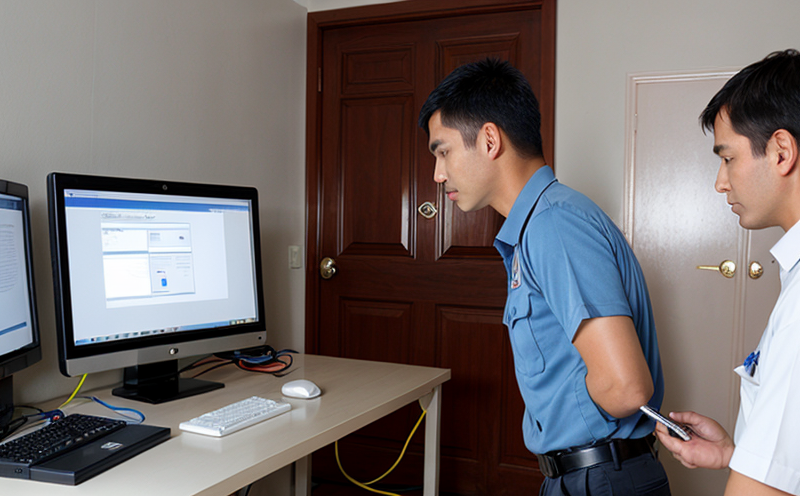Alarm and monitoring system inspection
The importance of a robust alarm and monitoring system cannot be overstated in critical sectors such as healthcare, manufacturing, and infrastructure. These systems are designed to detect anomalies, alert operators to potential hazards, and ensure that necessary actions are taken promptly. In this section, we will delve into the intricacies of inspecting these systems, ensuring they meet regulatory standards and operational requirements.
Alarm and monitoring systems must be thoroughly inspected to guarantee their reliability and accuracy. This inspection process involves several key steps: initial site survey, system calibration, performance testing under various conditions, and verification against international standards such as ISO 13849-2 for safety-related control systems in the automation sector.
During an alarm and monitoring system inspection, it is crucial to ensure that all components of the system are functioning correctly. This includes sensors, actuators, alarms, and associated software. The inspection process typically involves a detailed review of the system’s design documentation, followed by hands-on testing in real-world conditions.
The goal of this inspection is not only to identify any existing issues but also to prevent future failures by ensuring that the system adheres to best practices and regulatory requirements. By doing so, we can provide peace of mind for our clients, knowing that their systems are reliable and compliant with industry standards.
| Applied Standards | Description |
|---|---|
| ISO 13849-2 | Safety-related control systems in the automation sector |
| IEC 62067 | Alarm systems for industrial automation and process control |
| EN 54 | Fire alarm systems - Particular requirements for certain types of buildings (e.g., hospitals) |
The inspection process is designed to be comprehensive, covering all aspects of the system. This includes checking the integrity of wiring and connections, ensuring that alarms are functioning correctly, and verifying that the software is up-to-date and free from vulnerabilities. By adhering to these stringent standards, we can ensure that our clients' systems are not only compliant but also highly reliable.
Our team of experts uses state-of-the-art equipment and software to conduct these inspections. We employ a multi-disciplinary approach, combining expertise in electrical engineering, software development, and automation technology to provide the most thorough inspection possible. This ensures that no detail is overlooked, and any potential issues are identified and addressed promptly.
Regular maintenance and periodic inspections of alarm and monitoring systems are essential for ensuring their continued reliability. By scheduling these inspections at regular intervals, we can prevent costly downtime and ensure that your system remains in top condition.
Applied Standards
- ISO 13849-2: Safety-related control systems in the automation sector
- IEC 62067: Alarm systems for industrial automation and process control
- EN 54: Fire alarm systems - Particular requirements for certain types of buildings (e.g., hospitals)
The inspection of alarm and monitoring systems is guided by several internationally recognized standards. These standards provide a framework for ensuring that the system meets the highest levels of safety, reliability, and compliance.
Industry Applications
In the healthcare sector, reliable alarm and monitoring systems are critical to ensuring patient safety. In hospitals, these systems are used to monitor vital signs, detect potential emergencies, and alert staff to any issues that may arise. This is especially important in environments where even a momentary failure could have serious consequences.
Manufacturing facilities also rely on robust alarm and monitoring systems to ensure the smooth operation of their processes. These systems help prevent downtime by detecting and addressing issues before they become critical. In addition, they contribute to overall quality control by ensuring that products meet strict specifications.
In infrastructure sectors such as power generation and transportation, reliable alarms are essential for maintaining safety and efficiency. For instance, in power plants, these systems can detect potential equipment failures, preventing costly outages and ensuring a stable supply of energy.
International Acceptance and Recognition
- ISO 13849-2 is widely accepted in the automation sector as it provides clear guidelines for safety-related control systems.
- IEC 62067 has been adopted by many industrial organizations, particularly those involved in process control and automation.
- EN 54 is recognized globally for its specific requirements related to fire alarm systems.
The standards used in the inspection of alarm and monitoring systems are internationally accepted and recognized. This ensures that our clients can be confident in the reliability and compliance of their systems, regardless of location or industry sector.





